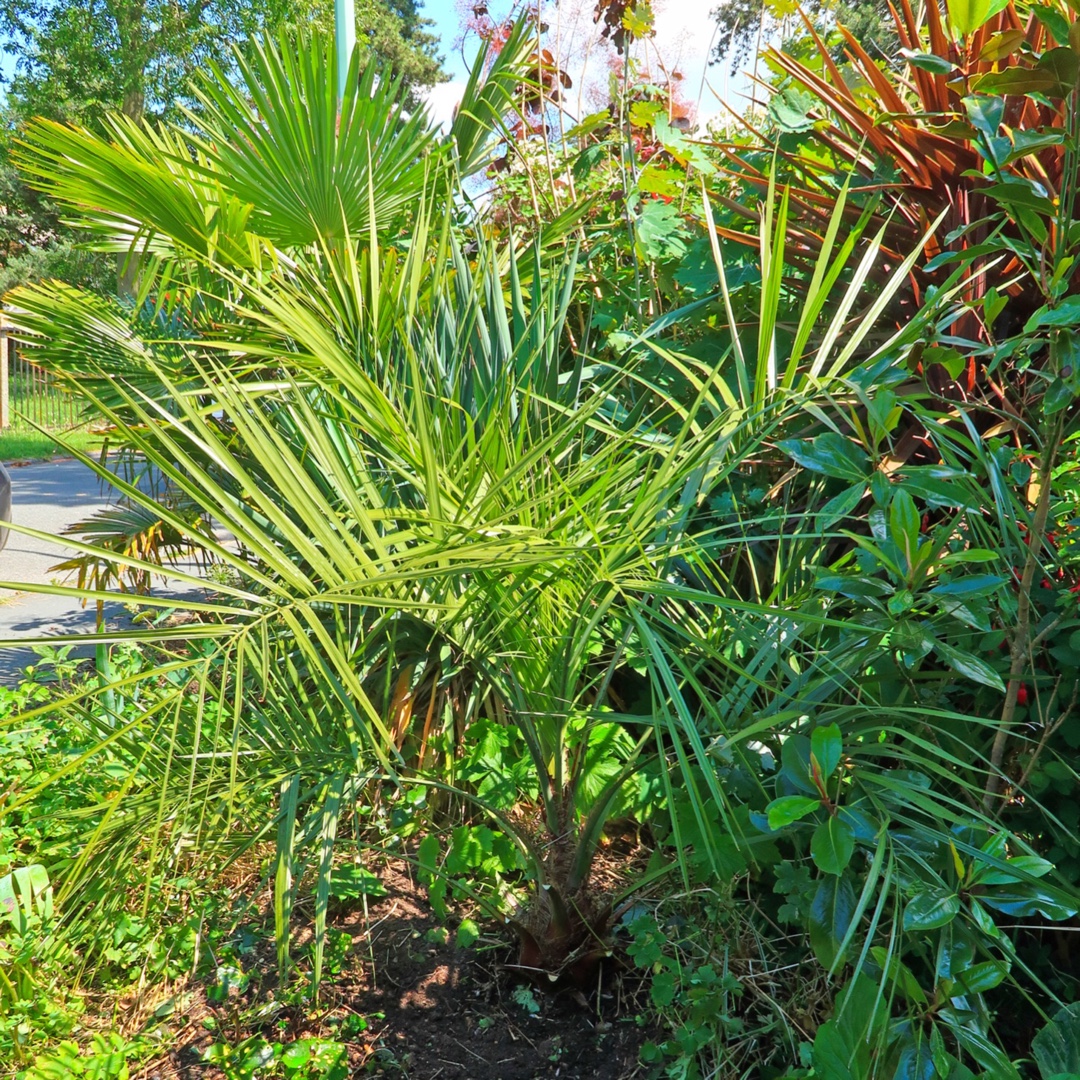
Butia eriospatha
Woolly Jelly Palm
This feather-palm is very frost resistant and established good sized plants have been known to survive -12C, or even to recover from frost damage after lower temperatures. It is well suited to Northern European gardens - it is used to a cool and wet climate. This beautiful palm occurs throughout all of the mountainous area of South Brazil where it is cultivated for its sweet and delicious fruits.
Contributed by @petecross
-
Full sun to partial shade
-
Very little water
-
Frost Hardy: 23F (-5°C)
-
Light and free draining
Common name
Woolly Jelly Palm
Latin name
Butia eriospatha
type
Palm
family
Arecaceae
ph
5.0 - 7.5 Acid - Neutral
Plant & bloom calendar
-
Best time to plant
full grown dimensions
 3.00 M
6.00 M
3.00 M
6.00 M
Butia eriospatha
This feather-palm is very frost resistant and established good sized plants have been known to survive -12C, or even to recover from frost damage after lower temperatures. It is well suited to Northern European gardens - it is used to a cool and wet climate. This beautiful palm occurs throughout all of the mountainous area of South Brazil where it is cultivated for its sweet and delicious fruits.
Planting
From Mid Spring TO Late Spring
Plant in mid to late spring in well drained soil in a position sheltered from north or easterly winds. During the first three years, protect with a screen of matting or hessian and a deep mulch of bracken or straw in severe weather.









